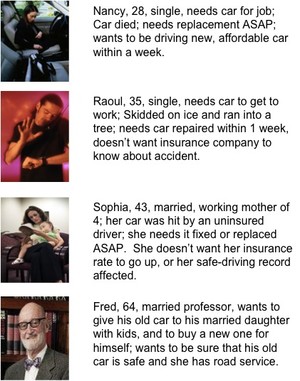Customer Journey Mapping
How to Ensure that Your Customer Experience Journey Map Reflects Your Customers’ Scenarios
Here’s how to create a Customer Experience Journey Map. Start by mapping the ideal experience for key customer segments and customer-critical activities. Each Customer Scenario Map captures the ideal experience for a customer segment/persona who wants to get something done (a Customer Scenario). Identify the Customers’ Moments of Truth that appear across all of these Customer Scenario Maps. Use these Moments of Truth to form the backbone of your end-to-end customer journey. Then combine them at a high level to tell the story about how your prototypical customers will want to experience your products and your brand.
NETTING IT OUT
Customer Journey Mapping is a good way to build consensus around the importance of delivering a great end-to-end customer experience. Customer Journey Mapping is usually done as an interactive workshop with key stakeholders from different functional areas within your organization. The result is a better understanding about which customer experience touchpoints are high priorities to improve and why they matter so much to all customers (or to particular groups of customers).
 Here’s how the Patricia Seybold Group practices Customer Journey Mapping: We start by identifying several key customer personas and typical scenarios (usually by interviewing customers)—next, we help your cross-functional teams design ideal experiences for each customer scenario. Then we generate a single end-to-end Customer Journey Map that captures the recurring moments of truth, customer metrics, and high priority improvements or innovations that will delight the majority of your customers. Your Customer Journey Map will be more comprehensive if it’s derived from several customer scenarios.
Here’s how the Patricia Seybold Group practices Customer Journey Mapping: We start by identifying several key customer personas and typical scenarios (usually by interviewing customers)—next, we help your cross-functional teams design ideal experiences for each customer scenario. Then we generate a single end-to-end Customer Journey Map that captures the recurring moments of truth, customer metrics, and high priority improvements or innovations that will delight the majority of your customers. Your Customer Journey Map will be more comprehensive if it’s derived from several customer scenarios.
We also recommend two high value steps that many other customer journey mapping techniques don’t use:
Groups of representative customers map their ideal customer experiences along with your cross-functional teams. So you aren’t making assumptions about what different groups of customers need; they are showing you what’s important to them and why.
External stakeholders who are part of the customer ecosystem can also participate in the mapping exercise. That way, your partners and suppliers (and even your regulators) can align their metrics and streamline their processes based on your mutual customers’ priorities.
 WHAT'S THE PURPOSE OF A CUSTOMER JOURNEY MAP?
WHAT'S THE PURPOSE OF A CUSTOMER JOURNEY MAP?
Agree on How You Want Customers to Experience Your Brand End-to-End
Many organizations undertake Customer Journey Mapping as a way to emphasize and reinforce the importance of providing their customers with a great experience at every touchpoint. Often people in different parts of the organization don’t realize that their policies and processes may negatively impact an otherwise great brand experience. For example:
- If you make it easy and pleasant for customers to buy your products, but they have trouble using/consuming the products themselves, it mars their experience.
- If you provide exquisite customer support, but the bills you send are inaccurate and confusing, it damages the customer experience.
- If customers have a difficult time replenishing or renewing with you, that tarnishes your brand experience.
- If customers (and prospective customers) find it onerous to establish credit with your organization, it may negatively impact their perception of your brand.
How do you educate people in different departments about the impact their department has on the brand experience your company offers? One way is to bring key people from all of these different functional areas together and ask them to put themselves in your customers’ shoes. As a group, the stakeholders from different parts of your organiation map out the ideal end-to-end customer journey.
By putting themselves in your customers’ shoes and walking through the typical phases in a customer lifecycle, your cross-functional team will inevitably discover opportunities to improve the customer experience. Some of these opportunities for improvement will be quick wins. Some will be more strategic and more time-consuming to implement. Those bigger breakthroughs are what provides true brand differentiation...(more)
(Download the PDF to read the entire article.)
Sign in to download the full article
0 comments
Be the first one to comment.



